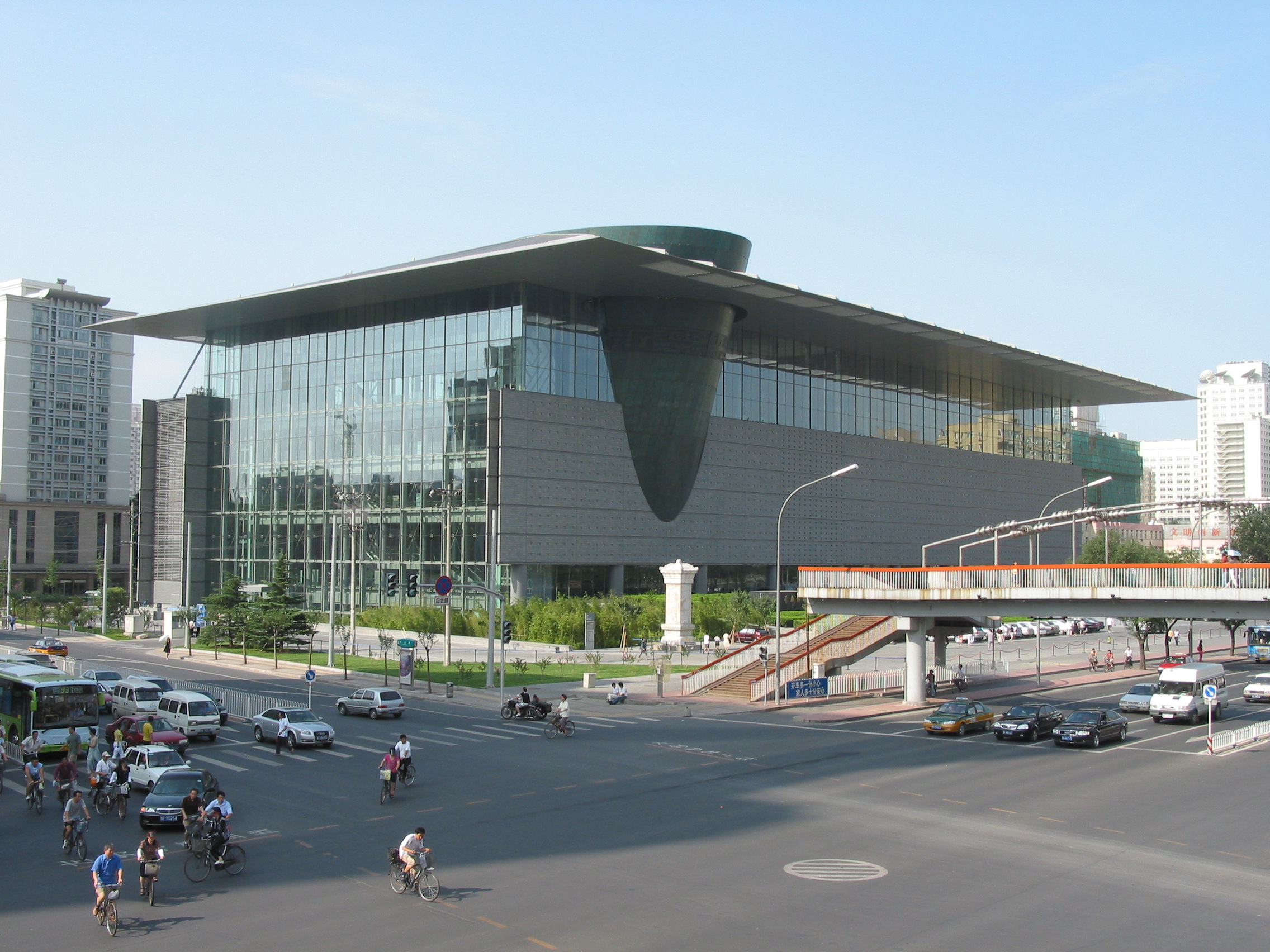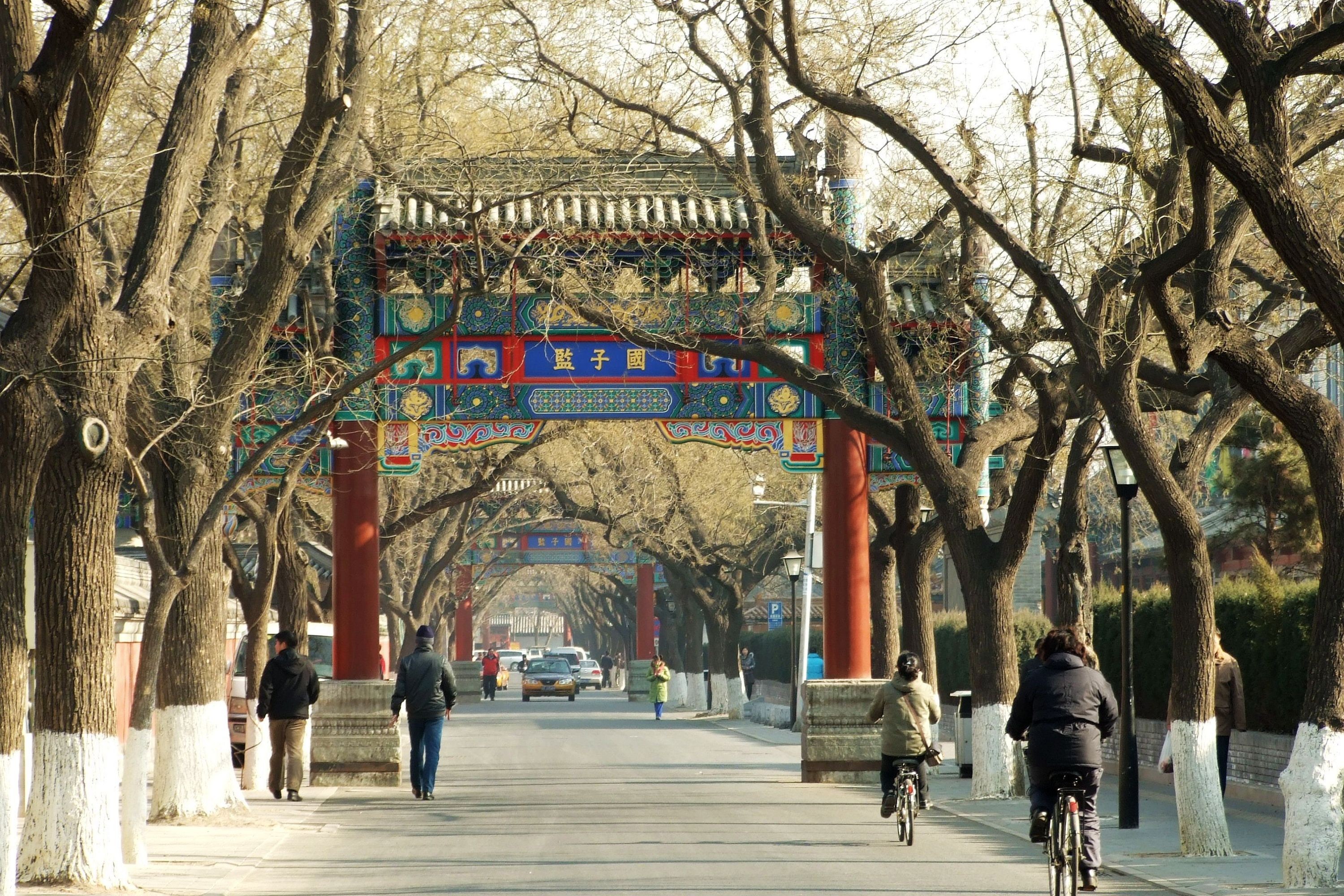|
Capital Museum
The Capital Museum (Chinese: 首都博物馆) is an art museum in Beijing, China. It opened in 1981 and moved into its present building in 2006, which houses a large collection of ancient porcelain, bronze, calligraphy, painting, jade, sculpture, and Buddhist statues from imperial China as well as other Asian cultures Part of the museum's collections were formerly housed in the Confucius Temple on Guozijian Road in Beijing. Overview The Beijing Capital Museum today contains over 200,000 cultural relics in its collection. . Only a small fraction of the collection is exhibited, and a significant percentage of the museum's art collection comprises artifacts unearthed in Beijing. The Capital Museum was established in 1981 with a collection of some 83,000 objects. Alth ... [...More Info...] [...Related Items...] OR: [Wikipedia] [Google] [Baidu] |
Xicheng District
Xicheng District () is a district of Beijing. Xicheng District spans , covering the western half of the old city (largely inside the 2nd Ring Road - the eastern half is Dongcheng District, Beijing, Dongcheng District), and has 706,691 inhabitants (2000 Census). Its List of postal codes in China, postal code is 100032. Xicheng is subdivided into 15 subdistricts of the city proper of Beijing. The former Xuanwu District, Beijing, Xuanwu District was merged into Xicheng in July 2010. The Xidan commercial district, Beijing Financial Street (Jinrongjie), Beihai Park, Jingshan Park, Shichahai and Zhongnanhai are within its jurisdiction. The popular Houhai bar area is also in Xicheng Precinct. Before the 1911 Revolution, most royalty and aristocrats resided in the precinct. The oldest Catholic church in Beijing, the Cathedral of the Immaculate Conception, Beijing, Cathedral of the Immaculate Conception is located in Xicheng. Administrative divisions There are 15 Subdistricts of China ... [...More Info...] [...Related Items...] OR: [Wikipedia] [Google] [Baidu] |
Guozijian Road
Guozijian Street (Chinese: 国子监街; Pinyin: Guózǐjiàn Jiē), formerly known as Chengxian Street (Chinese: 成贤街; Pinyin: Chéngxián Jiē), is a street in Dongcheng District, Beijing. It is listed as an important historical site. The Beijing Guozijian (Imperial College), dating to 1306, and a Temple of Confucius, built in 1302, are located in this street. The Yonghe Temple The Yonghe Temple (, "Palace of Peace and Harmony"), also known as the Yonghe Lamasery, or popularly as the Lama Temple, is a temple and monastery of the Gelug school of Tibetan Buddhism located on 12 Yonghegong Street, Dongcheng District, Beij ... is located next to its east entrance. References {{coord, 39.9455, N, 116.4123, E, source:wikidata, display=title Dongcheng District, Beijing Streets in Beijing ... [...More Info...] [...Related Items...] OR: [Wikipedia] [Google] [Baidu] |
Art Museums Established In 1981
Art is a diverse range of human activity, and resulting product, that involves creative or imaginative talent expressive of technical proficiency, beauty, emotional power, or conceptual ideas. There is no generally agreed definition of what constitutes art, and its interpretation has varied greatly throughout history and across cultures. In the Western tradition, the three classical branches of visual art are painting, sculpture, and architecture. Theatre, dance, and other performing arts, as well as literature, music, film and other media such as interactive media, are included in a broader definition of the arts. Until the 17th century, ''art'' referred to any skill or mastery and was not differentiated from crafts or sciences. In modern usage after the 17th century, where aesthetic considerations are paramount, the fine arts are separated and distinguished from acquired skills in general, such as the decorative or applied arts. The nature of art and related concepts, su ... [...More Info...] [...Related Items...] OR: [Wikipedia] [Google] [Baidu] |
Beijing This Month
''Beijing This Month'' (BTM) is a free monthly English language magazine, published in Beijing by the Beijing Foreign Cultural Exchanges Centre in association with the Beijing City Government. History and profile The magazine's first issue appeared in 1994. Non-audited, self-reported circulation of 70,000 copies per month, the magazine can be found at Beijing hotels, office buildings, and cultural sites, indeed anywhere with large numbers of tourists, including Beijing Capital International Airport. Advertising is primarily of hotels, shows, and restaurants in central Beijing. BTM primarily focuses on tourism and the promotion of Beijing. Being an arm of the Beijing Government, unusual or out-of-hours access to sensitive sites in the city (such as the Temple of Heaven or the Great Wall) is often arranged, and the magazine features high-quality photography of such places. Issues are usually dedicated to a particular theme: the 2004 Olympic Torch Relay The 2004 Summer Olympic ... [...More Info...] [...Related Items...] OR: [Wikipedia] [Google] [Baidu] |
List Of Museums In China
, there are 3,589 museums in China, including 3,054 state-owned museums (museums run by national and local government or universities) and 535 private museums. With a total collection of over 20 million items, these museums hold more than 8,000 exhibitions every year and 160 million people visits. Some museums of cultural relics, such as the Museum of Qin Terracotta Warriors and Horses in Xi'an, have become internationally known tourist attractions. The government has exchanges of cultural relics exhibitions between museums and promotes the display and exchanges of legal non-governmental collections. The museums are classified into several grades, with the national first-grade museums being the highest classification. List Below is a list of museums in China grouped by the provinces or municipalities where they are located. Anhui *Anhui Provincial Museum *Anhui Hall of Fame *Anhui Paleontology Fossil Museum *Bengbu Museum *China Huizhou Tax Museum *Ma'anshan Museum *She County ... [...More Info...] [...Related Items...] OR: [Wikipedia] [Google] [Baidu] |
Ming Dynasty
The Ming dynasty (), officially the Great Ming, was an Dynasties in Chinese history, imperial dynasty of China, ruling from 1368 to 1644 following the collapse of the Mongol Empire, Mongol-led Yuan dynasty. The Ming dynasty was the last orthodox dynasty of China ruled by the Han Chinese, Han people, the majority ethnic group in China. Although the primary capital of Beijing fell in 1644 to a rebellion led by Li Zicheng (who established the short-lived Shun dynasty), numerous rump state, rump regimes ruled by remnants of the House of Zhu, Ming imperial family—collectively called the Southern Ming—survived until 1662. The Ming dynasty's founder, the Hongwu Emperor (r. 1368–1398), attempted to create a society of self-sufficient rural communities ordered in a rigid, immobile system that would guarantee and support a permanent class of soldiers for his dynasty: the empire's standing army exceeded one million troops and the naval history of China, navy's dockyards in Nanjin ... [...More Info...] [...Related Items...] OR: [Wikipedia] [Google] [Baidu] |
Bi (jade)
The ''bi'' is a type of circular ancient Chinese jade artifact. The earliest ''bi'' were produced in the Neolithic period, particularly by the Liangzhu culture ( 3400– 2250 BCE).Teaching Chinese Archaeology, object 3 - NGA Later examples date mainly from the , Zhou and dynasties. They were also made in |
Chinese Architecture
Chinese architecture (Chinese:中國建築) is the embodiment of an architectural style that has developed over millennia in China and it has influenced architecture throughout Eastern Asia. Since its emergence during the early ancient era, the structural principles of its architecture have remained largely unchanged. The main changes involved diverse decorative details. Starting with the Tang dynasty, Chinese architecture has had a major influence on the architectural styles of Japan, Korea, Mongolia, and Vietnam, and minor influences on the architecture of Southeast and South Asia including the countries of Malaysia, Singapore, Indonesia, Sri Lanka, Thailand, Laos, Cambodia and the Philippines. Chinese architecture is characterized by bilateral symmetry, use of enclosed open spaces, feng shui (e.g. directional hierarchies), a horizontal emphasis, and an allusion to various cosmological, mythological or in general symbolic elements. Chinese architecture traditionally classifies ... [...More Info...] [...Related Items...] OR: [Wikipedia] [Google] [Baidu] |
Jean-Marie Duthilleul
Jean-Marie Duthilleul (born 1952) is a French architect and civil engineer. Education He studied architecture at the École de Paris La Seine, Paris and engineering at the École Polytechnique and the École des Ponts et Chaussées (now ). Career In 1977, he became interested in the subject of urban planning, particularly of planned communities, which helped shape his views on centralisation, social mobility, population density and, later, energy management. In 1982, he was project manager for the Universal Exposition and in 1983 was put in charge of the management of large Parisian civil state-sponsored projects. In 1986, the directors of SNCF (French State Railways) hired him to form a new architectural division. With Étienne Tricaud, he laid the theoretical groundwork for the creation of new, large stations in a contemporary style, which he saw from the points of view of both urban planning and architecture: opening up the city, intermodal transport, traffic managem ... [...More Info...] [...Related Items...] OR: [Wikipedia] [Google] [Baidu] |
National Art Museum Of China
The National Art Museum of China (NAMOC, ) is located at 1 Wusi Ave, Dongcheng District, Beijing, People's Republic of China. It is one of the largest art museums in China, and is funded by the Ministry of Culture. The construction of the museum started in 1958, and concluded in 1962. It has a total land area of . The museum was renovated between May 2004 and January 2005, and has been given an additional area of . Collection Its permanent collection includes both ancient and contemporary Chinese artworks as well as notable Western artworks. Although the museum contains collection of imperial Chinese art, its main mission is to serve as a national level art museum dedicated to displaying, collecting and researching the modern and contemporary artistic works of China. It has a main building of four stories, the first three being display areas. There are 21 exhibition halls at the museum. Its collections are divided into specific categories of: *traditional Chinese painting, *o ... [...More Info...] [...Related Items...] OR: [Wikipedia] [Google] [Baidu] |
National Museum Of China
The National Museum of China () flanks the eastern side of Tiananmen Square in Beijing, China. The museum's mission is to educate about the arts and history of China. It is directed by the Ministry of Culture and Tourism of the People's Republic of China. History The museum was established in 2003 by the merging of the two separate museums that had occupied the same building since 1959: the Museum of the Chinese Revolution in the northern wing (originating in the Office of the National Museum of the Revolution founded in 1950 to preserve the legacy of the 1949 revolution) and the National Museum of Chinese History in the southern wing (with origins in both the Beijing National History Museum, founded in 1949, and the Preliminary Office of the National History Museum, founded in 1912, tasked to safeguard China's larger historical legacy). The building was completed in 1959 as one of the Ten Great Buildings celebrating the ten-year anniversary of the founding of the People's Repu ... [...More Info...] [...Related Items...] OR: [Wikipedia] [Google] [Baidu] |
Palace Museum
The Palace Museum () is a huge national museum complex housed in the Forbidden City at the core of Beijing, China. With , the museum inherited the imperial royal palaces from the Ming and Qing dynasties of China and opened to the public in 1925 after the last Emperor of China was evicted. Constructed from 1406 to 1420, the museum consists of 980 buildings. It is home to over 1.8 million pieces of art, mostly from the imperial collection of the Ming and Qing dynasties. The 20th century saw its expansion through new acquisitions, transfers from other museums, and new archaeological discoveries. According to the ''Beijing Evening Post'', the museum has seen more than 17 million visitors in 2018, which would make it the world's most visited museum. It has an average of 15 million visitors annually since 2012. Due to this increased pressure, the management has set a daily limit for visitors of 80,000 since 2015 to protect the structure and the experience. History Palace Th ... [...More Info...] [...Related Items...] OR: [Wikipedia] [Google] [Baidu] |

.jpg)






_(6762511251).jpg)


